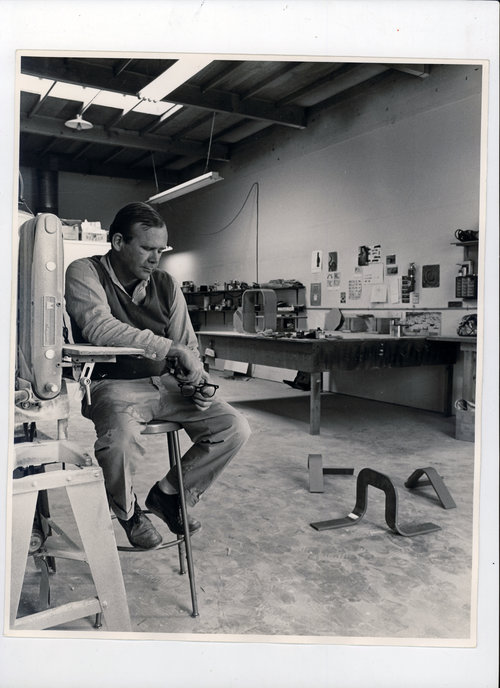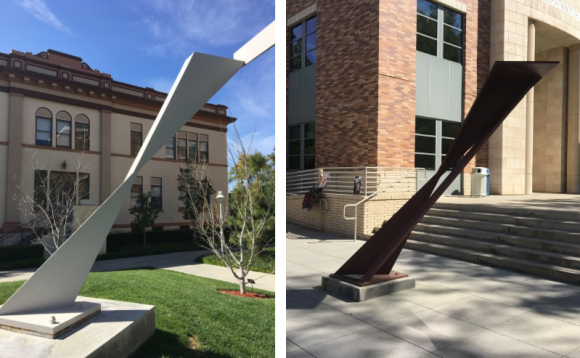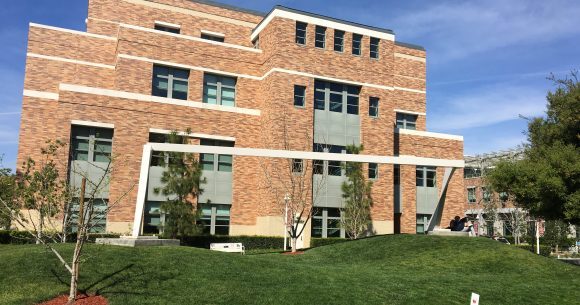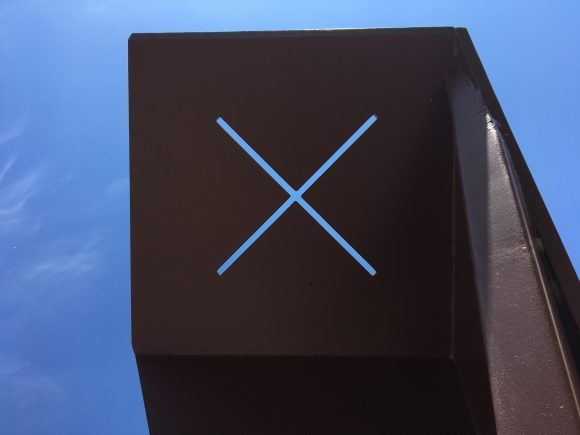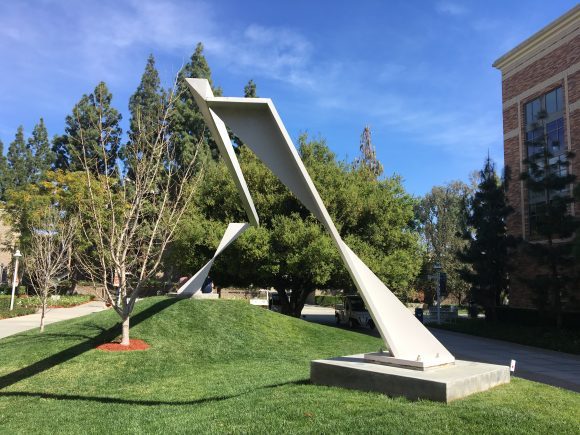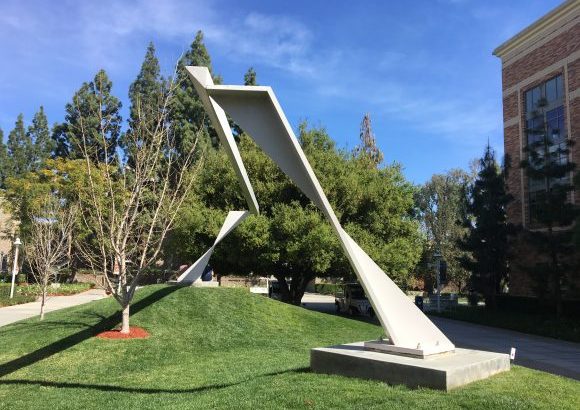
Remembering Tony DeLap His impact on the Chapman Community
June 12, 2019
The Art Collections Department was deeply saddened to hear of the passing away of Orange County artist Tony DeLap on May 29th. DeLap’s works hold a special place in our collection and are a part of our daily life on campus. At this time, we would like to take the opportunity to remember his life and the impact that he continues to have on our community.
Tony DeLap was born in Oakland, California in 1927, but grew up and studied in the San Francisco Bay Area. DeLap was greatly influenced by the San Francisco skyline, especially the Golden Gate Bridge, which served as a point of inspiration for his art. DeLap was a founding faculty member in the 1965 opening of the University of California at Irvine and taught in their art department for two and a half decades. During this time, he was a true trail-blazer, exploring the limitless potential of Abstract and Minimalist sculpture. He was also a fundamental leader in the op art and “Light and Space” movements of the 1960s and 1970s. It was during the 1970s that DeLap discovered his love for painting architectural and optical illusions – a subject matter that he would continue to explore throughout his career. DeLap was featured in many notable exhibitions throughout his career. Most recently, in 2018, the Laguna Museum of Art held a Tony DeLap retrospective exhibition, which featured eighty paintings, sculptures, and drawings. DeLap’s works can be found in countless permanent collections across the United States.
The two most monumental DeLap sculptures included in the Escalette Collection can be found on Chapman’s main campus. In between the Leatherby Libraries and Oliphant Hall, the steel frames of Levitation of the Enchanted Princess and Le Levateur stand tall at mind-bending angles. Levitation of the Enchanted Princess was specifically built for Chapman in 1983, and was designed to rest on the two grassy hills where it remains to this day. Its bridge-like appearance recalls the awesome fluidity and strength of industrial structures like the Golden Gate Bridge.
Le Levateur uses negative space to capture the attention of those passing by. The piece was originally painted blue, however when it was moved to Chapman’s campus, the color was changed to a reddish-brown color to better reflect the earthy natural tones of its location. Nestled within one of the main sidewalks on campus, Le Levateur invites those walking by to interact with it. As the sun moves throughout the day, Le Levateur casts different-shaped shadows that extend even further out into the viewer’s space. And when the sun is overhead, the shadow of the “X” hidden in the top of the work is magically revealed. Levitation of the Enchanted Princess and Le Levateur are unique and unusual, both expressing DeLap’s use of geometric shapes and his playfulness with space. They articulate the “Light and Space” movement and effect observer’s perception of reality.
Another of DeLap’s works, entitled Mr. Mystic, is currently on display in a study area on the third floor of Beckman Hall. This study area was specifically designed with art in mind – huge, UV tinted windows that extend to the fourth floor were installed to provide a large amount of natural light (without causing damage to the painting). This is an especially fitting home for a work by DeLap who was interested in exploring the impact of light and color on the human experience of reality. At different times of day and during different seasons, the light coming in through this window bounces off the red wall, exposing new and different ways of seeing Mr. Mystic.
The Art Collections Department is extremely proud to display DeLap’s works, which continue to push the boundaries of art and sculpture and never fail to capture the observer’s eye through shape and mirage. His art will continue to inspire, amaze, and welcome Chapman students, faculty, staff, and visitors.
Interested in learning more about Chapman University’s collection of Tony DeLap works? Schedule a tour of the Escalette Collection of Art by emailing artcollections@chapman.edu
